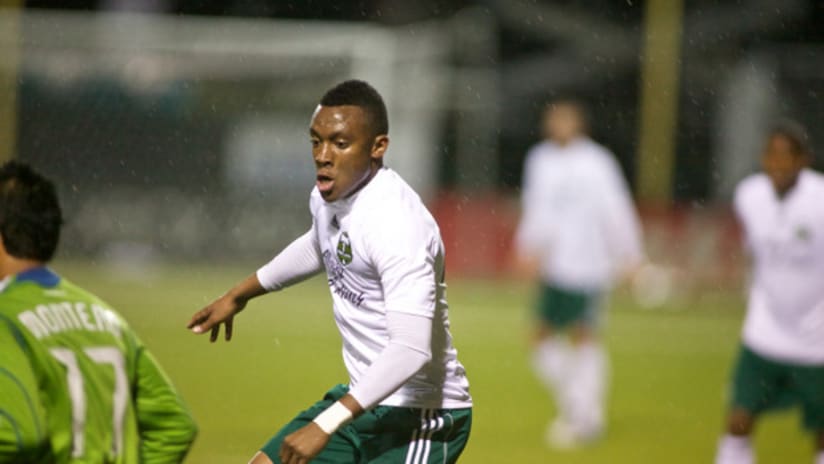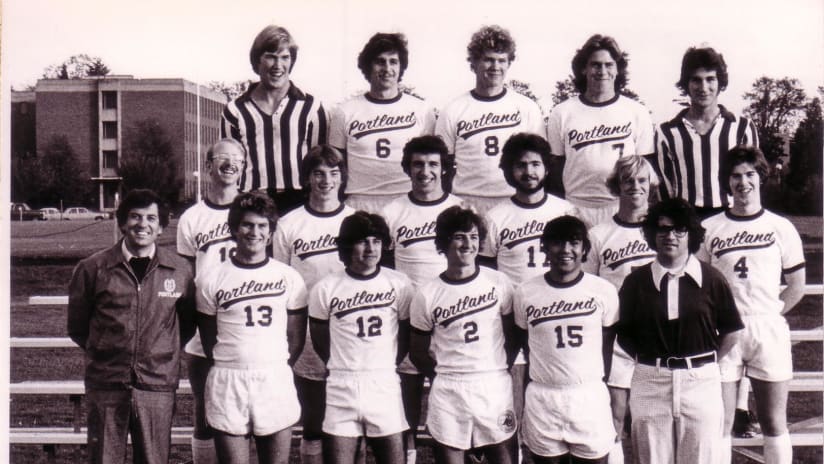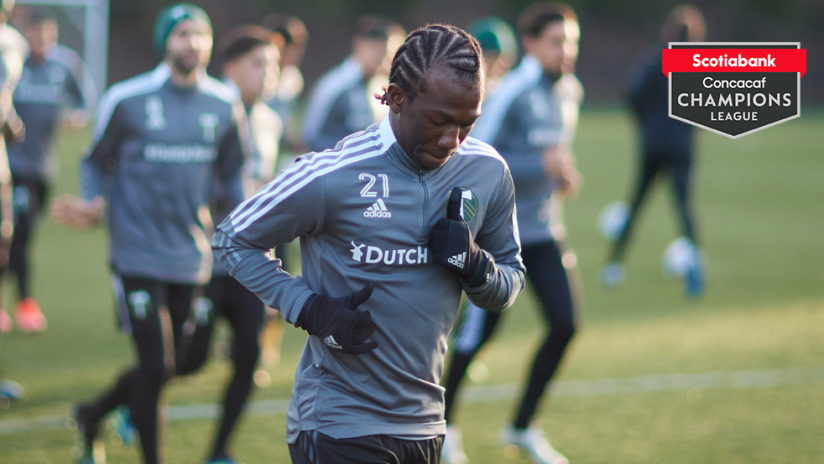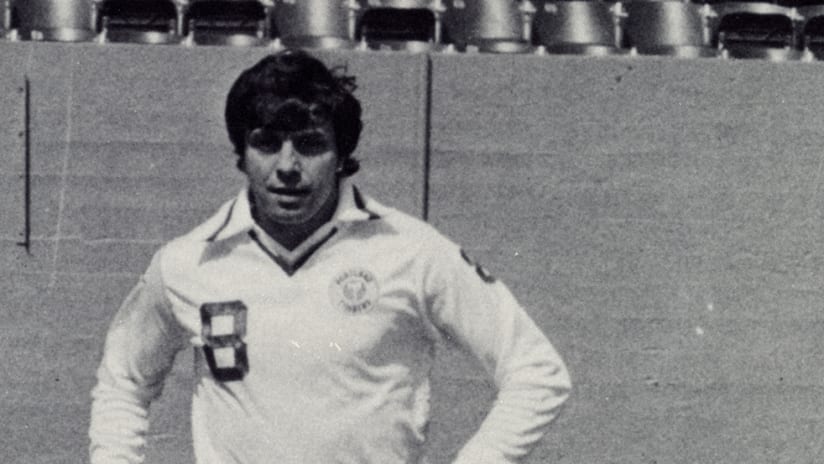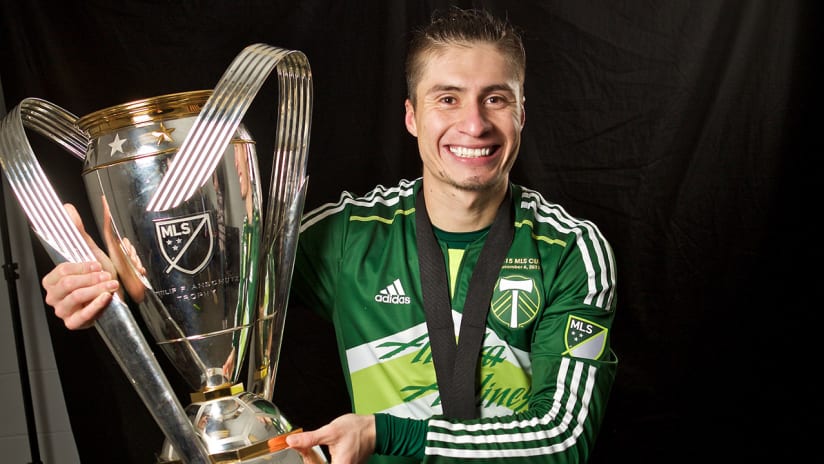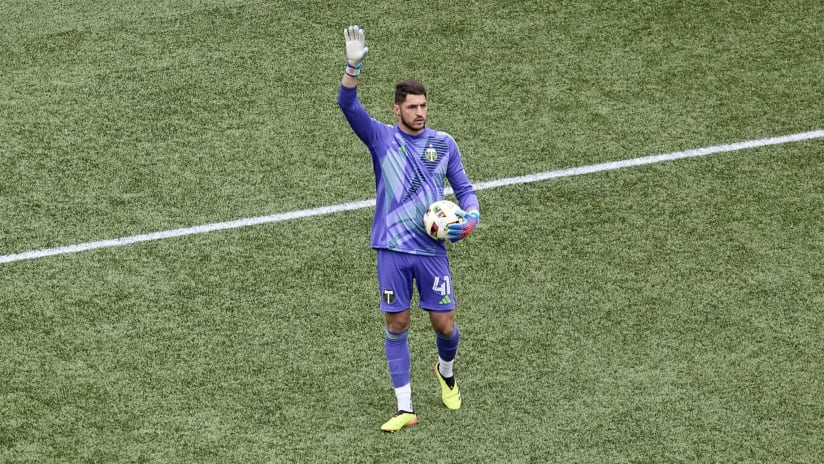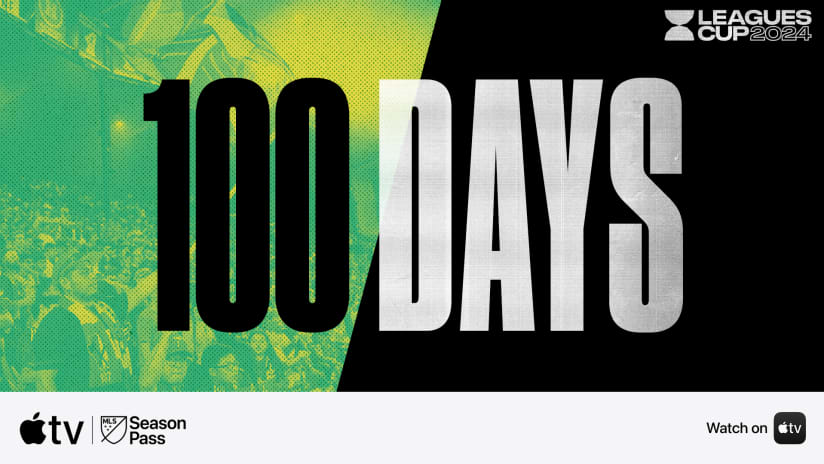Editor’s Note: You’ve heard Timbers Broadcaster John Strong on the radio and internet calling games for the Portland side for some time now. Heading to training, traveling on the road with the team, and watching every pass, flick, save, and shot, he knows this team inside and out.
With the 2011 MLS season about to commence this Saturday in Colorado (6:00 p.m. PT on ROOT Sports (formerly Fox Soccer Northwest) and KXL 750), Strong gives an inside look at what the team will look like this year, the challenges it faces, and the outlook for the future.
In Part One, Strong breaks down the goalkeeping and defensive sectors of the team. Part Two will focus on the midfield and forwards.
I'm far from the first one to say this, but there are a few unifying characteristics in what is otherwise a pretty disparate Portland Timbers roster in 2011. There is no core, per se, no returning cadre of established veterans like other MLS teams, and the players themselves were assembled from a rich variety of sources and former homes. And yet, there is an overall picture coming together here.
Coach John Spencer has said that he wants youth, athleticism, and talent. While every coach ever has said that, we're starting to see now what he really means. The Timbers roster has youth, but also experience: even with so many players under the age of 25, most have at least one full season of MLS play under their belts, and all of the prospective starting XI saw regular playing time last year (barring major injury).
Yes, they're athletic, but unlike the way that is often interpreted in American soccer these days, that doesn't come at the expense of soccer skill. I once heard a coach make a distinction between "athlete" and "soccer player", the idea being that many of the "athletes" plying their trade in the sport lacked some of the technical skills those who lived soccer their entire lives might have picked up naturally. When you look up and down the roster, while you see many great athletes, I know coach Spencer also sees a lot of "soccer players".
Finally, talent, which would seem to be obvious for a team of players who made it into the professional ranks. But what I mean, and what Spencer was looking for, was the versatile talent that allows him to play different combinations, different formations, and have more depth than would at first appear. Midfielder Jeremy Hall is an option in defense, Ryan Pore has played forward, Steve Purdy was once a center back, Jack Jewsbury says he's played just about every position at some point in his college or pro career; even David Horst donned Troy Perkins' gloves in the last "Moustache Shootout." Each member of the team has a specific skillset and way they can be plugged into the machine, but isn't constricted to just one position. Let's see how it all comes together....
At the end of the day, as important as defensive players are, they don't win you games. They may help to hold onto a winning scoreline, they certainly keep you from losing; but they don't win games. That takes goals, and it takes both goalscorers and those who would create chances for those goalscorers. And that's coming up next.
Goalkeeper
Everyone I’ve talked to over the last year has said that for the Timbers to have success in their first year in MLS, they have to get it right at the back. Specifically, the Timbers have to have a goalkeeper they can rely on, and hopefully one who can be the calming, veteran presence this young team will need when the heat is turned up. Luckily, they seem to have found that in Troy Perkins.
The Timbers gleefully snatched up Perkins when he was made available for a trade by DC United just before Christmas, and are now banking on the 29-year-old to be the cornerstone of their ambitions for this season. He’s not massive at 6’1”, but his experience and ability to read the game more than make up. You don’t really want your goalkeeper flopping around in the six yard box anyway; it usually means he’s not seeing the ball well and moving his feet. His leadership stood out from day one on the practice field, and he was tipped as a candidate for captain before Jack Jewsbury arrived.
Backup Adin Brown fits the physical profile to a T: 6’4”, imposing, borderline-scary looking when he wants to be, Brown also has a lengthy resume filled with stops across MLS and in Norway in his decade-long career. Having not played a full match in almost 2 calendar years due to foot injuries, fitness will be his biggest task this year. Waiting in the wings is 20-year-old Jake Gleeson, who the Timbers think is their backstop of the future (after watching him lock down the PDL last year on the U-23s), and he’s starting to get the eye of the New Zealand national team as well.
Defense
When you break down how coach John Spencer wants his team to defend, you can almost separate them into two different units: with so much emphasis on the outside backs (or fullbacks, depending on which side of the Atlantic you grew up on) getting forward into the attack, overlapping wide midfielders, and serving balls into the box, there’s pressure on the center backs to cover and stay organized when their teammates go on bombing runs forward.
Anchoring things in the center, are Kevin Goldthwaite and Eric Brunner. Goldthwaite played for the Timbers on loan in 2005, and joined up again late last year after injuries (and some dude named Marquez) forced him out of New York. At 6’1” he’s using his lower body to deal with some of the big hulks MLS teams line up at forward, but again it’s about experience here; he’ll hit 100 league appearances midway through the 2011 season.
Brunner is the aerial specialist at 6’4”, and comes to Portland after seeing his minutes dry up in Columbus. The 25-year-old started 23 games in 2009 as the defender of the future in his hometown, before seeing that number cut in half last year. Behind those two is David Horst, another bruiser at 6’4” who’s trying to bounce back from knee surgery who was exiled from Real Salt Lake but won a championship while on loan centering the defense for second division Puerto Rico Islanders, and then there’s everyone’s local favorite, Futty.
Mamadou Danso, as he’s formally known, became a mainstay of the Timbers’ backline the last two years after Cameron Knowles’ horrific broken leg in August 2009. He’s got the size at 6’3”, but athleticism and a surprising nose for goal (he was a forward in college) to go with it. Don’t be surprised at all to see Horst or Futty emerge as a regular starter—or potential super sub—later in the season.
On the outsides, it’s all about guys who can defend when needed, but can also add a sting to the attack. On the left it’s Rodney Wallace, who came to Portland via a trade from DC United for Dax McCarty, who everyone thought the Timbers were crazy to trade after taking him No. 1 in the Expansion Draft. Wallace is looking to quiet doubters after a broken leg last year hit pause on a promising start to his MLS career. Former center back Steve Purdy, who was moved to right back last year in Portland, has taken his spot on the right side. At 6’4” he doesn’t look like your typical speedster on the outside, but once that long stride gets going he glides past opponents.
Former U-23 standout Freddie Braun provides cover at right back, but is still learning the intricacies of the position after moving from his natural midfield spot; that being said, his hustle and work ethic have impressed coaches since he showed up from Louisville. Chris Taylor, a 2nd round draft pick from Tulsa, was tracked all last fall by assistant coach Amos Magee, and backs up Wallace on the left.
With the goalkeeping and defense now in place, next up we’ll take on the midfield and forwards in Part Two.

